TDR Interviews: Abid Javed
THE DESIGN RELEASE: Tell us about your background.
ABID JAVED: I was born and spent my early childhood in Hong Kong, with cultural heritage from Pakistan. I then moved to the UK with my family as a teenager and have ever since lived in between Manchester and London.

TDR: What led you to pursue science and more specifically molecular biology at PhD level?
AJ: I was a curious child growing up and I think that curiosity naturally led me to studying sciences in high school and college. I decided to study biochemistry as an undergraduate as I was more invested in biological sciences at college. This interest developed a little more towards studying how molecules work and study how cells operate at a molecular level by doing a series of short research projects in different labs. This then led me to pursue a PhD in molecular biology, studying how proteins fold as soon as they are made inside a cell on this molecular machine called the ribosome. I undertook my Biochemistry degree at University of Manchester and PhD at a lab at UCL, London.
TDR: Since you're a research scientist - how did your journey as a ceramic artist begin?
AJ: Growing up, I studied Art & Design in high school and college and dabbled into painting and illustration whilst doing my PhD. I later took up ceramics, doing it first as a weekend course outside work that then turned into a hobby, as I was able to use it as a creative outlet. During my PhD, I became fascinated by biological forms and storylines - how molecules behave, interact, communicate and wanted some form of artistic medium to channel my ideas and observations. This eventually developed into a ceramic design practice where I started blending my scientific knowledge and observations into making and designing abstract ceramic objects.
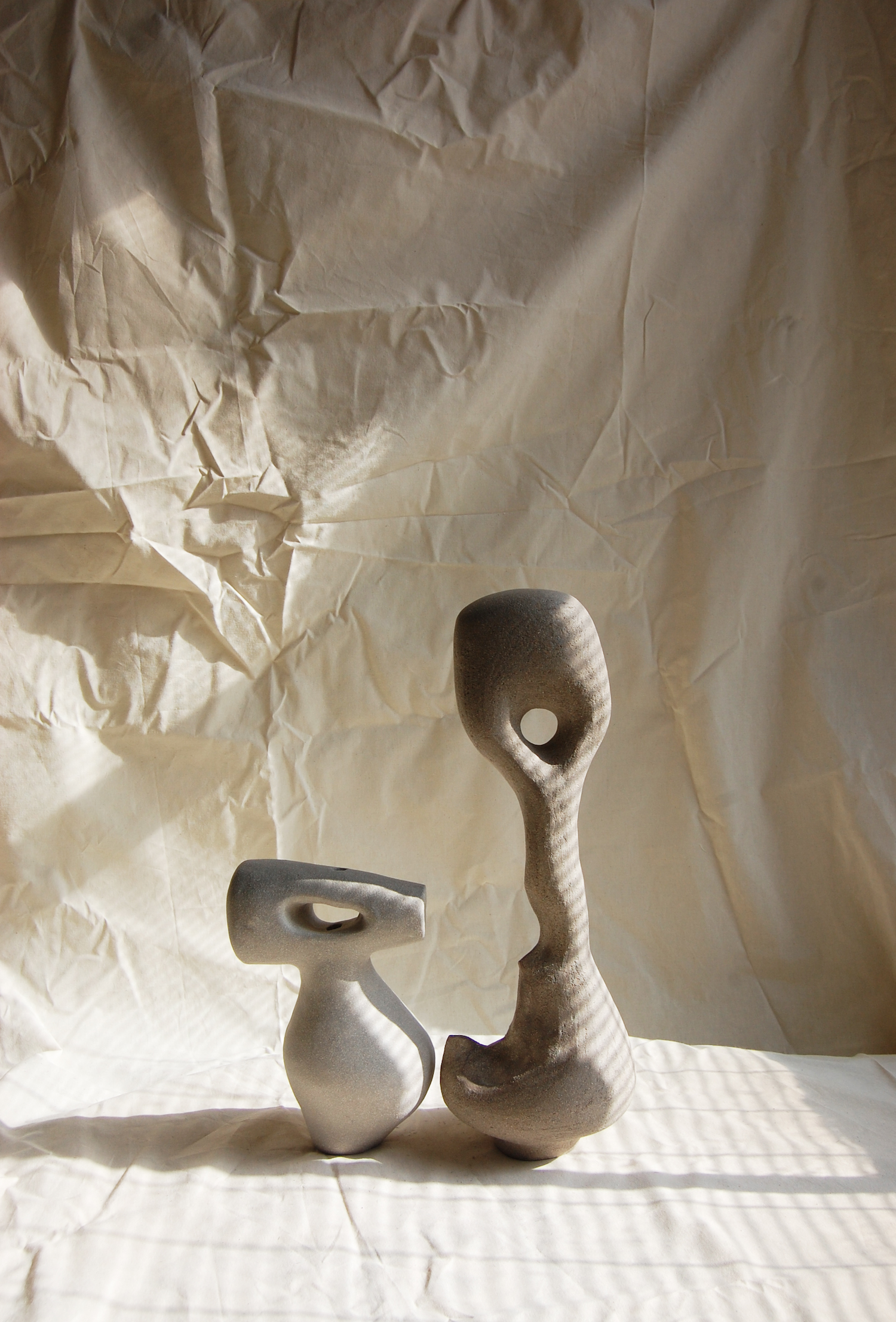
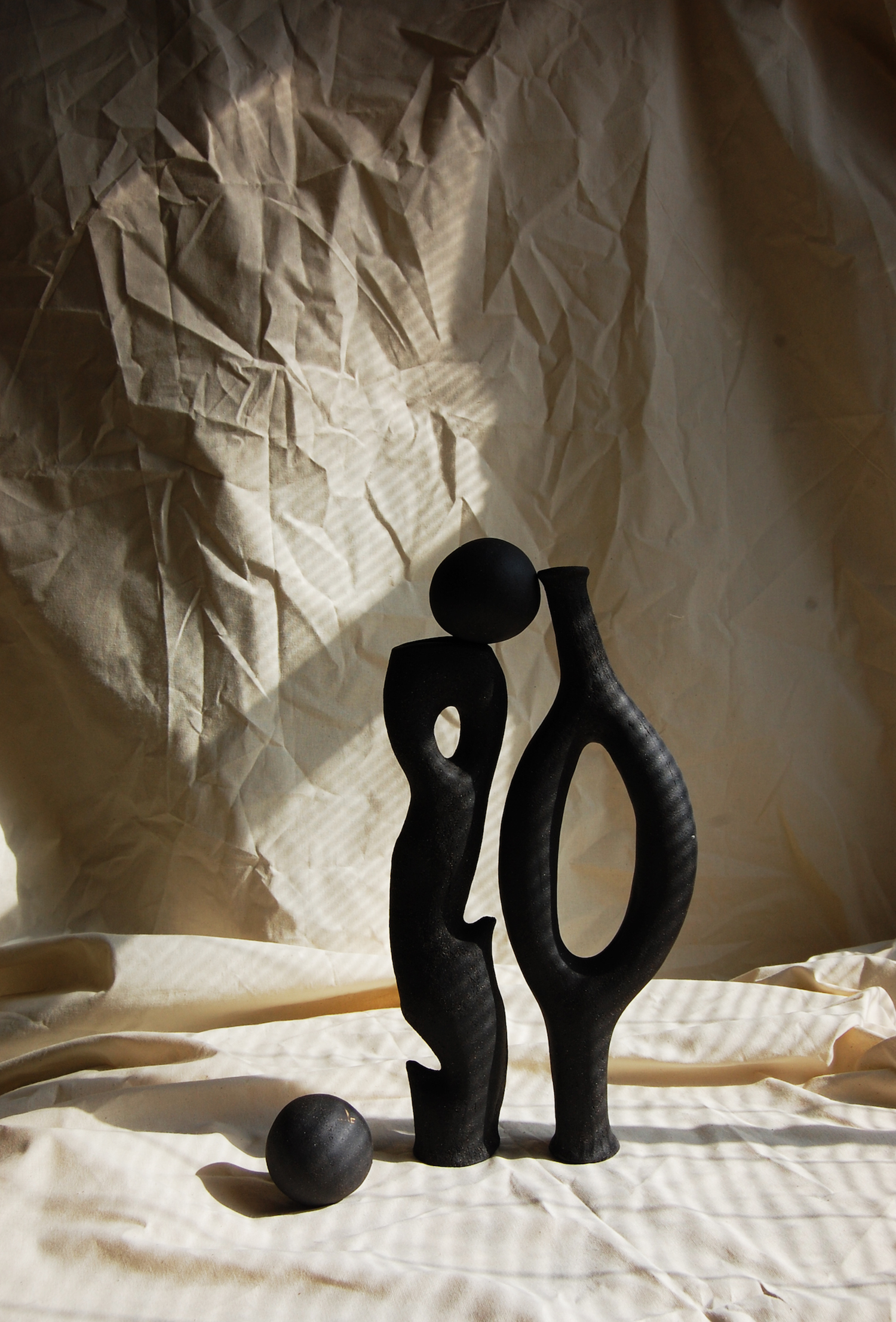
TDR: From where did you learn the art of ceramics?
AJ: I did a beginners course taught at one of the studios in East London, through a recommendation by a friend. It basically involved learning the basic techniques of working with clay - both with hands and turning clay on a wheel and was definitely an amazing starting point for me to start becoming curious and researching more into the ceramics field, developing into what I wanted to achieve out of it.
TDR: From where do you draw inspiration for your pieces?
AJ: A lot of it comes from biology. I then tap into an abstract realm and incorporate ideas pulled out of my subconscious which are a mixture of my other visual interests in mid-century design, geometry, artists from Noguchi to Henry Moore, Islamic art and fashion editorials.
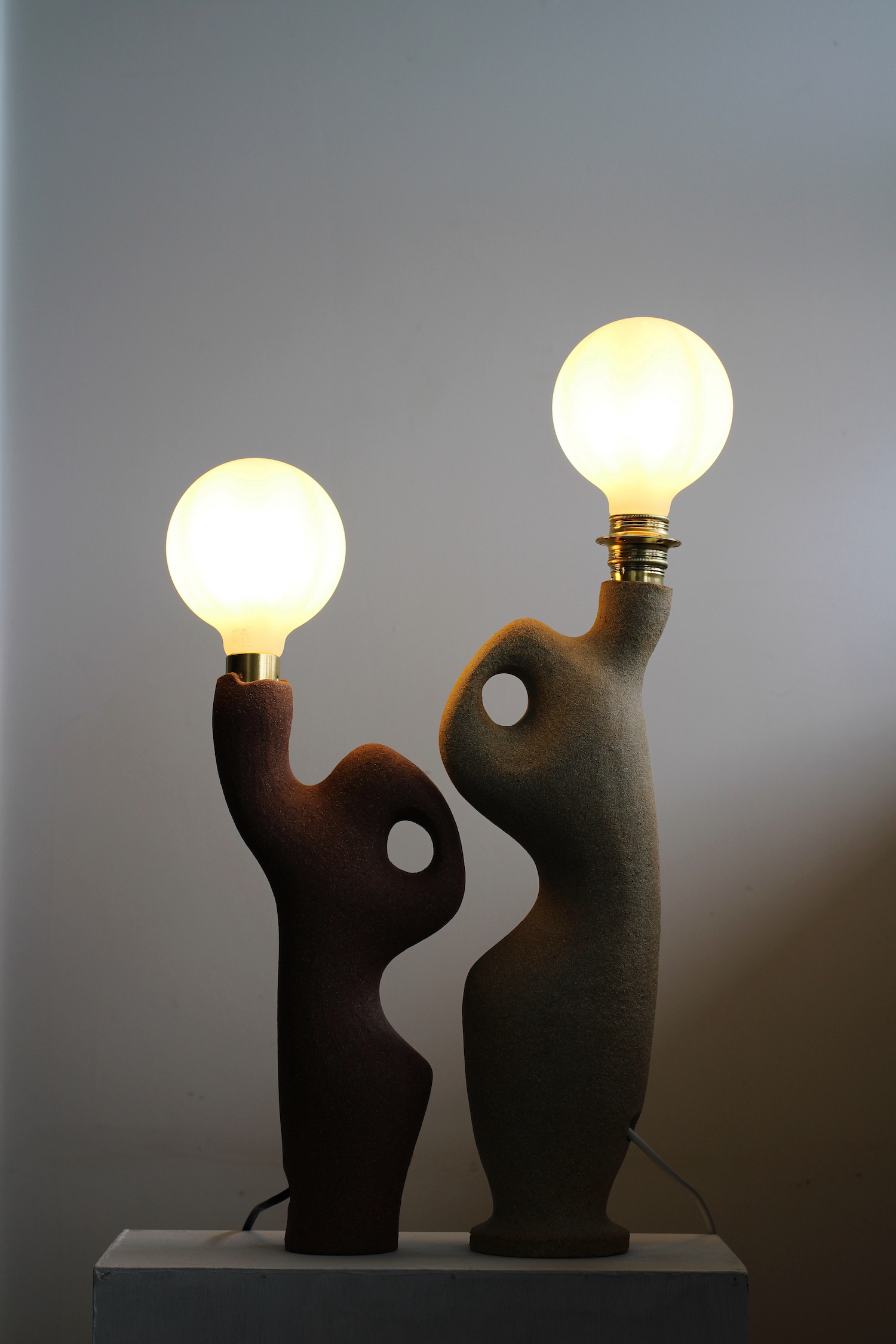
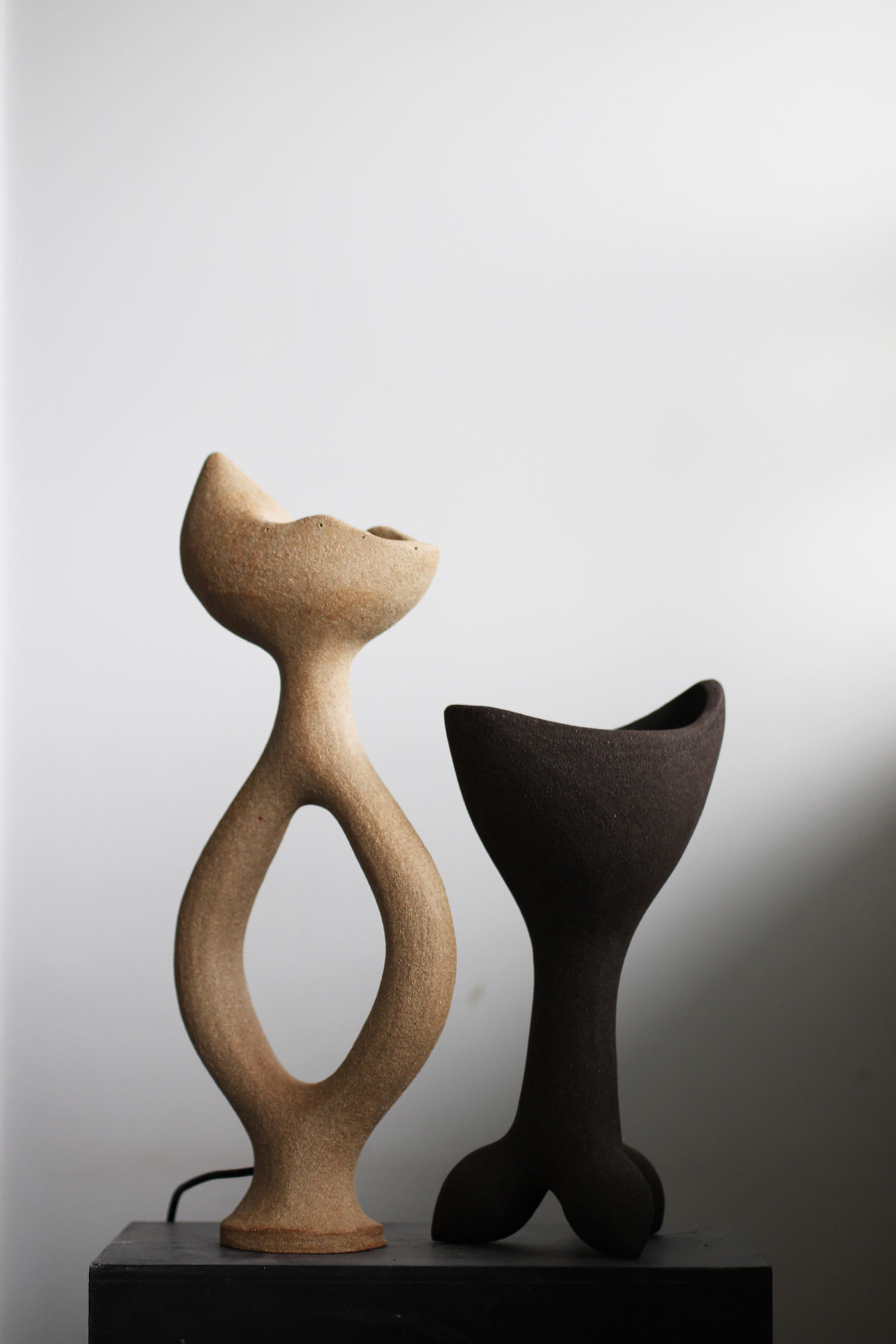
TDR: How does your heritage and culturally rich upbringing influence your work?
AJ: It definitely has had some role to play! Being a child of immigrant parents, I was naturally more open to different cultures and different ways of thinking. Growing up in Hong Kong, I was fortunate to be exposed to national museums, galleries and ballet. Spending time in Pakistan allowed me to see up-close the variety of hand craftsmanship and artistry people back home have - it’s a marvel to watch how their hands and mind are connected in creating beautiful handmade objects. And so cumulatively - my heritage has allowed me to be more open and appreciative of the beauty of traditional craftsmanship as well as my exposure to western arts.
TDR: How do you translate your findings from under the microscope to a tangible sculptural form?
AJ: I imagine molecules in different contexts in my head. At my scientific job, I’m regularly exposed to different molecules from different organisms which is a real privilege as it gives me a starting point to develop new forms in space. Taking a biological form or a storyline, I then sketch out variations in order to develop how a 3D form would work in a sculptural setting. This requires me tapping into an abstract realm, often connecting several visual notes in my head together to then decide upon a form I want to make. In other cases - I start building a piece which organically takes its own life form by the beauty of making it with clay, which is fun to experience!

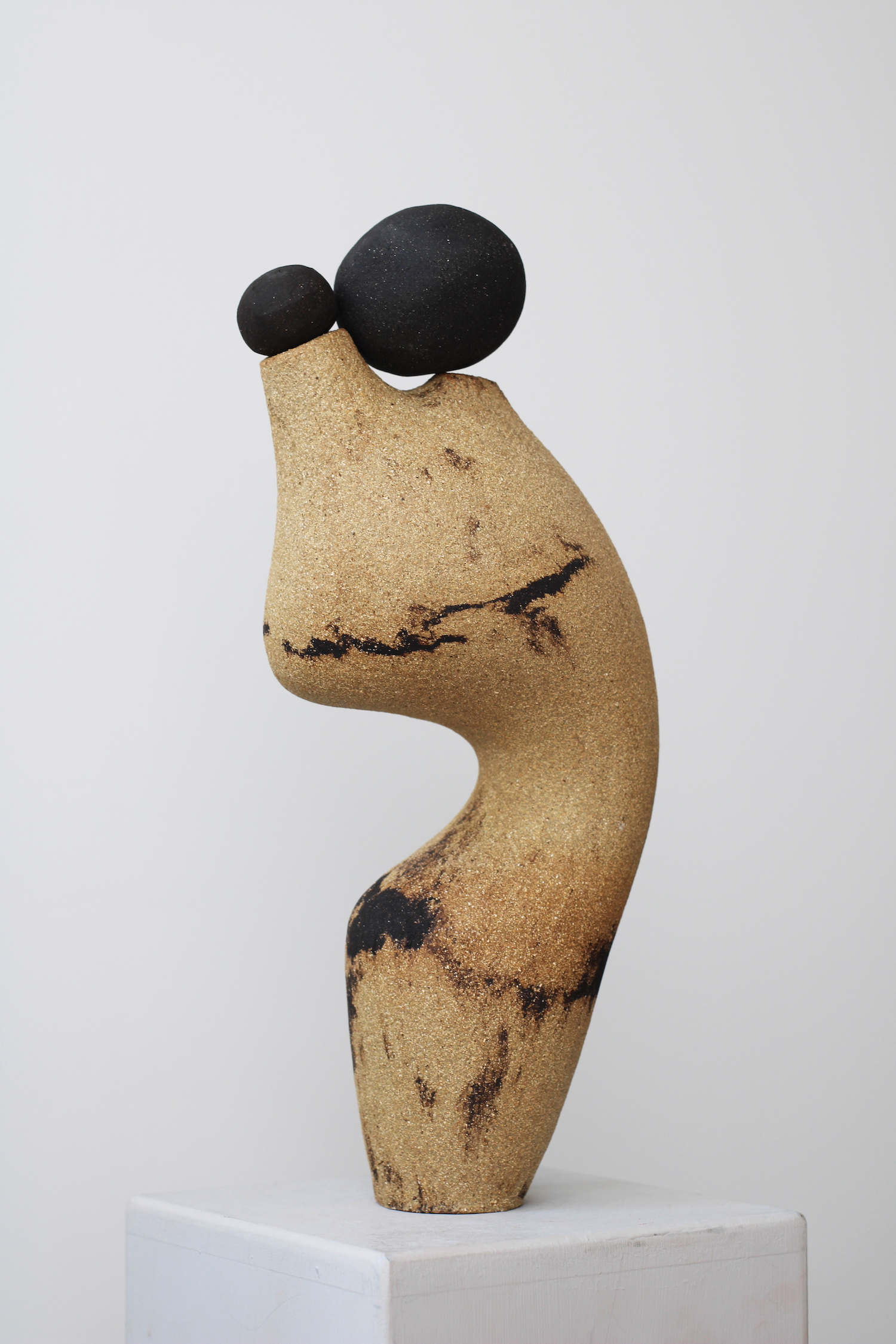
TDR: Could you take us behind the scenes of crafting a piece from scratch?
AJ: I usually start with an idea in my head or a series of sketches I’ve worked on, based on visual notes I’ve had in the past. I then decide on which clay body would work best with the sculptural form. Creating this systematic way in my practice has allowed me to be a bit more free and experimental by matching clay colors and textures with the forms. Once material decisions are made - I grab my banding wheel with a wooden board (in order to prevent raw clay sticking to the wheel), I pinch a ball of clay or make a slab. I then roll out pieces of clay into coils and build the form by joining the coils together gradually - vertically or horizontally. Once a rough draft of the form is achieved, I leave the piece to dry before I can begin sculpting - this requires adding or subtracting clay and can be hours and hours of work until a desirable shape is achieved. The piece is then left to dry before it can be fired to stoneware temperatures. For coloured clays - I either work with naturally coloured clays (earthy palettes) or I mix raw clay with oxides and stains that allow me to achieve a range of colors.
TDR: What is the most exciting part of the entire process for you?
AJ: The sculpting stage for me is the most satisfying part as I can fully relax in the repetitive motions of subtracting clay. The exciting part of the process is definitely unpacking the kiln and seeing the final piece in its finished form. Sometimes overwhelmingly joyful!

TDR: What challenges do you face?
AJ: Clay comes with its own challenges including learning how to work with it. Usually I’ve had pieces either cracking during the drying process or after firing them. In some instances, I’ve had pieces explode inside a kiln when there is some moisture trapped inside a closed piece - those moments are definitely undesirable. But you live and you learn!
TDR: What are the types of pieces featured in your collection?
AJ: So over the years, I’ve been able to diversify in terms of color, scale and the types of objects which has been a joy to develop as an artist. I have a series of miniature vases and sculptures (Miniatures Collection) which are basically smaller versions of my larger forms. I have an on-going collection of sculptures and vases called Pleomorphs - which is inspired by molecules undergoing changes - and this has gone through several iterations in terms of developments. Recently, I’ve ventured out into home objects and art furniture and have started making sculptural light objects, tables and stools. This is an exciting way forward as it's a leap into making more functional art objects that people can enjoy and live with!

TDR: Where are your pieces displayed and sold currently?
AJ: Some of my pieces are made to order on my website. This allows clients to customize and be a bit more collaborative in terms of what they would like for their spaces. For on-going and limited edition pieces - I sell via galleries such as MAH (London), Ruby Atelier (Copenhagen), Claude Home (New York) and closely collaborate with interior design companies on commercial projects.
TDR: Which is your favorite piece that you've created so far?
AJ: This is a hard choice to make as each new piece I create excites me more and assures me that I’m moving forward! But admittedly so far, I keep coming back to this piece called Pleomorph 50A (1st Gen). This is based on one half of a ribosome - a molecule that we all have and that makes all proteins inside a living cell. I’ve played and continue to play with this form in different ways and contexts - and each time it’s beautiful to watch it come to life and be celebrated in different interior spaces.
TDR: What pieces have you planned for the near future? Any upcoming collaborations?
AJ: So I’m currently developing and designing my lamp and candelabra collections. In the pipeline, I’ve started to work on making modular furniture pieces - out of a desire to explore the concept of modularity that exists in biology and also in physical spaces that makes pieces functionally appealing. I have some sculptures in the pipeline to complete as well from sketches on paper. And additionally have some commission pieces to finish before Christmas. This summer, I was commissioned to work on some wall pieces which has interested me to explore this territory so next year, I’m planning to play a little with making some wall sculptural pieces. And hopefully a solo exhibition in the pipeline too!
TDR: If you're not in your studio - what else do you really enjoy doing?
AJ: I really enjoy getting out in the nature - nothing beats experiencing the raw nature in its many facets! This sometimes opens up new ideas creatively. I also love experiencing art in many forms - be it live music, theater or a good piece of cinema. And I enjoy exploring book shops too - especially the ones that have limited edition monographs and photo books (to satisfy my visual mind).